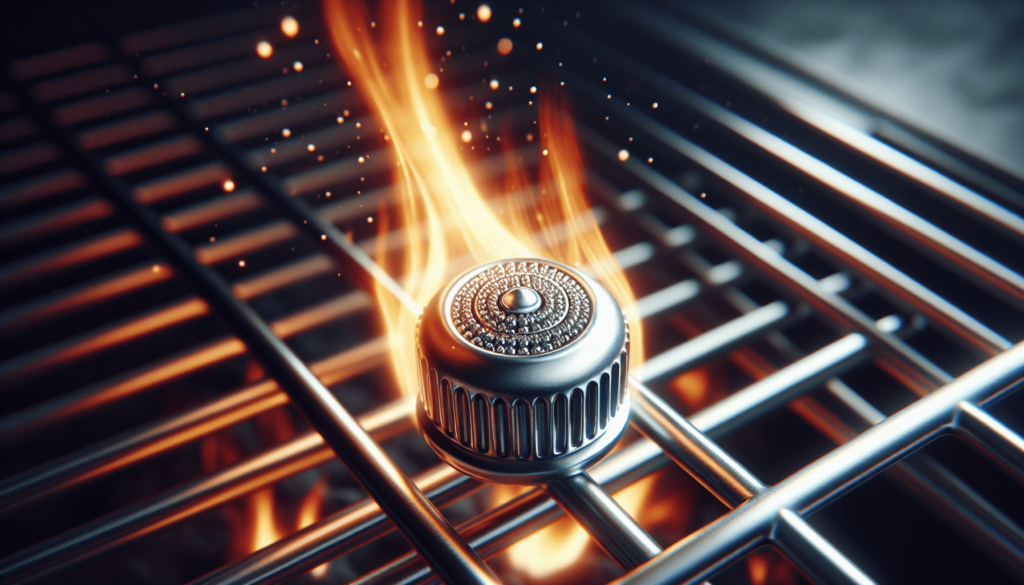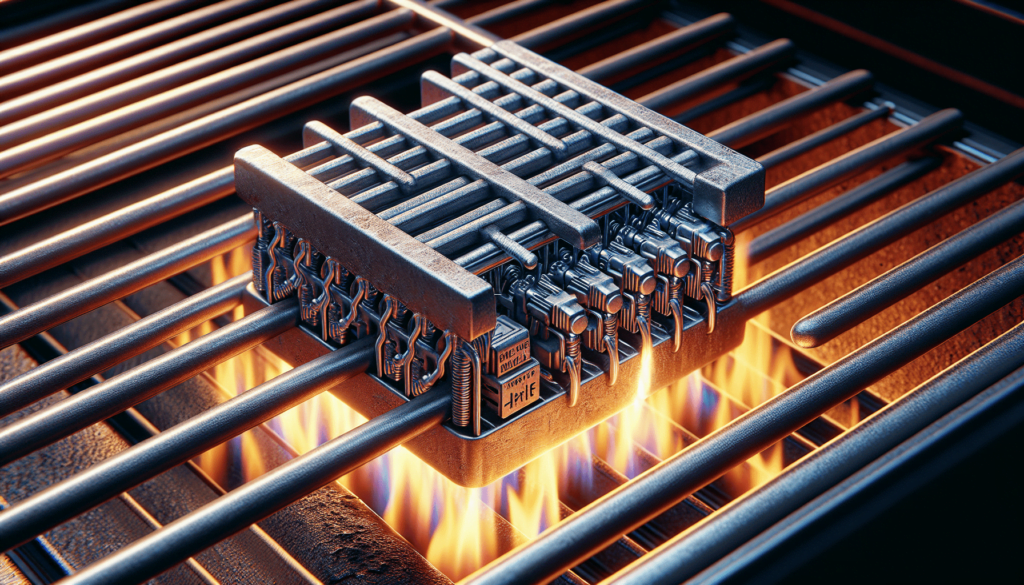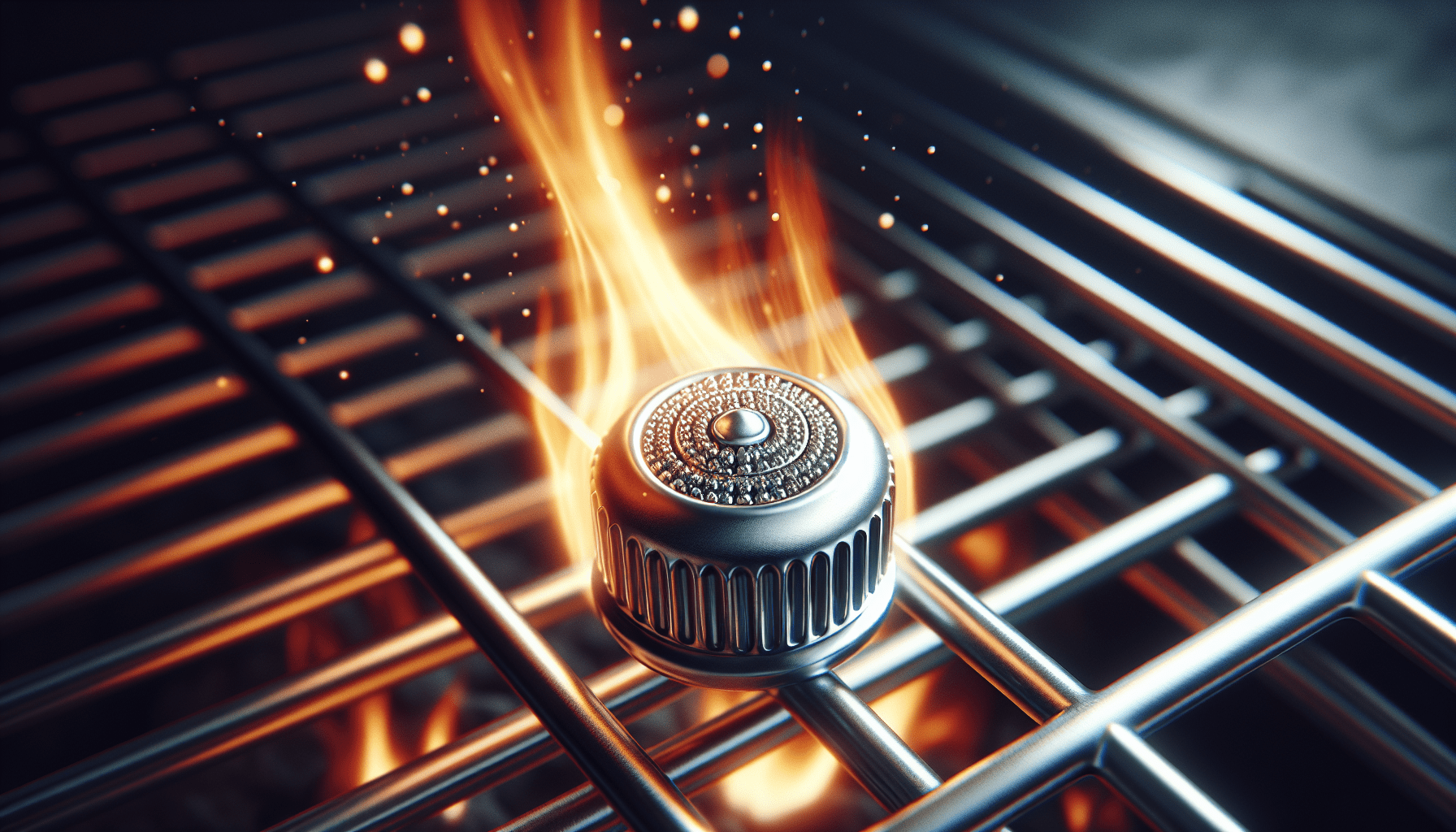Have you ever wondered how a grill flame tamer works? If you’re a grilling enthusiast, you might already know that a flame tamer is an essential accessory for your grill, but understanding its workings can take your grilling game to the next level.

What is a Grill Flame Tamer?
A grill flame tamer, also known as a heat plate or burner shield, is a component found in many gas grills. Its primary function is to distribute heat more evenly and shield the burners from direct contact with food drippings. This not only helps in preventing flare-ups but also enhances the overall cooking experience.
The Basic Structure of a Flame Tamer
A flame tamer is typically constructed from materials such as stainless steel, cast iron, ceramic, or porcelain. Each of these materials has its own benefits, influencing the durability and heat distribution characteristics of your grill.
| Material | Characteristics | Benefits |
|---|---|---|
| Stainless Steel | Durable and corrosion-resistant | Long-lasting and weather-resistant |
| Cast Iron | Heavy and excellent heat retention | Consistent and even heat distribution |
| Ceramic | High heat resistance and non-stick | Reduces sticking and easy to clean |
| Porcelain | Coated for durability and easy cleaning | Requires less maintenance and upkeep |
Placement of the Flame Tamer
In a typical gas grill setup, the flame tamer is positioned between the burners and the grates. This strategic placement allows it to catch drippings and diffuse heat, ensuring that your food cooks evenly without unwanted flare-ups.
How Does a Flame Tamer Work?
Heat Distribution
One of the main roles of a flame tamer is to evenly distribute the heat generated by your grill’s burners. Without a flame tamer, the heat from the burners would rise directly and unevenly, leading to hot and cold spots on your grill grates. This could result in food that is undercooked in some areas and overcooked in others.
Flame tamers help to:
- Spread heat more uniformly across the cooking surface.
- Enhance the overall grilling experience by providing consistent grilling temperatures.
Managing Flare-ups
Flare-ups occur when fat and oil from food drip down onto the burners, causing sudden bursts of flames. These flames can not only burn your food but also pose potential safety hazards. Flame tamers act as a barrier, preventing direct contact between the drippings and the burners. As a result, the chances of flare-ups are significantly reduced.
Vaporizing Drippings
Another impressive function of flame tamers is their ability to vaporize the drippings from your food. When fats and oils hit the hot surface of the flame tamer, they are converted into flavorful smoke. This smoke then rises and infuses your food with that delicious grilled flavor, enhancing the overall taste profile of your meal.
Enhancing Grill Efficiency
By distributing heat evenly and reducing flare-ups, flame tamers also contribute to the overall efficiency of your grill. With more consistent heat, your grill requires less time and less fuel to cook food properly. This can lead to more efficient grilling sessions and potential fuel savings over time.
Different Types of Flame Tamers
There are various types of flame tamers available, each with unique features tailored to different grilling needs. Understanding these types can help you choose the one that best suits your grilling style.
Stainless Steel Flame Tamers
Stainless steel flame tamers are popular for their durability and resistance to rust and corrosion. They offer a long-lasting solution and are often found in both high-end and budget grills.
Ceramic Flame Tamers
Ceramic flame tamers excel in heat retention and distribution, making them a great choice for grills where even cooking is critical. They are also relatively easy to clean and maintain, which adds to their appeal.
Porcelain-Coated Flame Tamers
Porcelain-coated flame tamers combine the heat distribution benefits of ceramic with the ease of cleaning associated with porcelain. They are less prone to sticking and typically require less maintenance.
Cast Iron Flame Tamers
Cast iron flame tamers are known for their excellent heat retention, ensuring a consistent cooking temperature. However, they are heavier and require more maintenance to prevent rusting, especially if not properly seasoned and cared for.
| Type | Pros | Cons |
|---|---|---|
| Stainless Steel | Durable, rust-resistant, long-lasting | May not retain heat as well as ceramic or cast iron |
| Ceramic | Excellent heat retention, easy to clean | Can be more fragile and prone to cracking |
| Porcelain-Coated | Great heat distribution, easy to maintain | Coating can chip over time, exposing the underlying metal |
| Cast Iron | Superior heat retention, robust | Heavy, requires regular seasoning to prevent rust |
How to Choose the Right Flame Tamer
Choosing the right flame tamer depends on various factors such as the type of grill you own, your grilling habits, and your preference for maintenance and durability.
Consider Your Grill Type
First, determine whether your grill is compatible with the type of flame tamer you’re considering. Many grills are designed to accommodate specific sizes and shapes of flame tamers, so make sure to check your grill’s specifications.
Evaluate Your Grilling Style
If you frequently cook foods that produce a lot of drippings, such as fatty meats, a ceramic or cast iron flame tamer that excels in heat retention and vaporizing drippings might be ideal. On the other hand, if you prefer a low-maintenance option, a stainless steel or porcelain-coated flame tamer might be a better fit.
Maintenance and Durability
Consider how much time and effort you’re willing to invest in maintaining your flame tamer. Ceramic and cast iron options may require more care, such as regular cleaning and seasoning, compared to stainless steel and porcelain-coated variants.

Installation and Maintenance Tips
Proper installation and maintenance of your flame tamer can enhance its lifespan and effectiveness, ensuring that you get the best performance out of your grill.
Installing Your Flame Tamer
- Turn off the Gas: Before installing or replacing your flame tamer, always ensure that the gas supply to your grill is turned off.
- Remove the Grates: Take out the cooking grates to access the burner area.
- Position the Flame Tamer: Place the flame tamer directly over the burners, ensuring it fits securely and covers the burners completely.
- Reassemble the Grill: Once the flame tamer is in place, reassemble your grill by replacing the cooking grates.
Regular Cleaning
To keep your flame tamer in good condition, regular cleaning is essential. Here are some tips:
- Remove Food Residues: After each grilling session, remove any food residues and drippings from the surface of the flame tamer.
- Deep Cleaning: Periodically remove the flame tamer and scrub it with a grill brush and warm soapy water. For more stubborn buildup, you can use a grill cleaner.
- Check for Damage: Inspect your flame tamer for any signs of wear or damage, such as rust or cracks, and replace it if necessary.
Common Issues and Troubleshooting
Understanding common issues related to flame tamers can help you troubleshoot and resolve any problems quickly, maintaining the peak performance of your grill.
Uneven Heat Distribution
If you notice uneven heat distribution even with a flame tamer, it could be due to improper installation or a clogged burner. Ensure that the flame tamer is correctly positioned and clean the burners to remove any blockages.
Persistent Flare-Ups
Persistent flare-ups might indicate an overloaded flame tamer. If the drippings are excessive and not vaporizing effectively, try cleaning the flame tamer more frequently or reducing the amount of fatty foods on the grill.
Rust and Corrosion
Rust and corrosion can compromise the effectiveness of your flame tamer, particularly if it’s made of cast iron or is porcelain-coated. Regular seasoning and proper cleaning can help prevent rust. If the damage is extensive, consider replacing the flame tamer.
Conclusion
Grill flame tamers play a crucial role in enhancing your grilling experience by distributing heat evenly, preventing flare-ups, and vaporizing drippings to infuse flavor into your food. By understanding how flame tamers work and how to maintain them, you can make informed decisions that positively impact your grilling adventures.
Whether you’re a seasoned griller or a backyard novice, knowing the ins and outs of flame tamers can help you achieve delicious and consistently cooked meals. Happy grilling!

